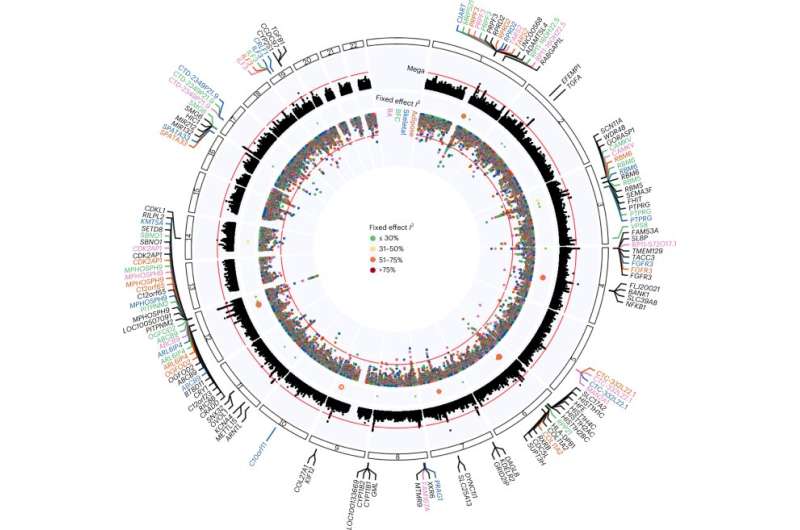
A team of researchers affiliated with several institutions in Alabama has linked 10 genetic loci to the development of osteoarthritis. In their paper published in the journal Nature Genetics, the group describes their analysis of data from the Million Veteran Program in the U.S. and the UK Biobank in the U.K.
Osteoarthritis is a progressive joint disease caused by inflammation. It is one of the most common types of arthritis and typically impacts the knees, hips, spine and hands. There is currently no cure and treatments are limited. Many people with the condition wind up with joint replacements. In this new effort, the researchers build on prior work into genetic factors linked to its development.
To find out which genes might be responsible for the development of osteoarthritis, the researchers used data from the Million Veteran Program—a database of health information, genetic data and other information for approximately 163,000 U.S. veterans. They distinguished 79,569 osteoarthritis patients from a control group of 80,002 unaffected individuals.
The researchers then did the same with data from the UK Biobank. After mixing and analyzing the data from both resources, the researchers isolated 10 new genetic loci associated with osteoarthritis and confirmed 17 others previously identified by other research groups.
The researchers also found what they describe as significant associations when they conducted ancestry stratified analysis of the data that could be connected with loci related to tissue not associated with joints. And they also conducted a gene-set enrichment analysis that helped to highlight genetic pathways connected with bone, cartilage and other connective tissue. They next explored possible biological processes involved in the development of osteoarthritis and potential treatments for symptoms.
The researchers note that identifying the genetics behind the development of osteoarthritis is only the first step toward identifying the chain of events that leads to joint damage—and ultimately, a way to break the chain, thus preventing it. They also note that more work is required to identify all of the genetic factors involved in the disease.
More information:
Merry-Lynn N. McDonald et al, Novel genetic loci associated with osteoarthritis in multi-ancestry analyses in the Million Veteran Program and UK Biobank, Nature Genetics (2022). DOI: 10.1038/s41588-022-01221-w
Journal information:
Nature Genetics
Source: Read Full Article
